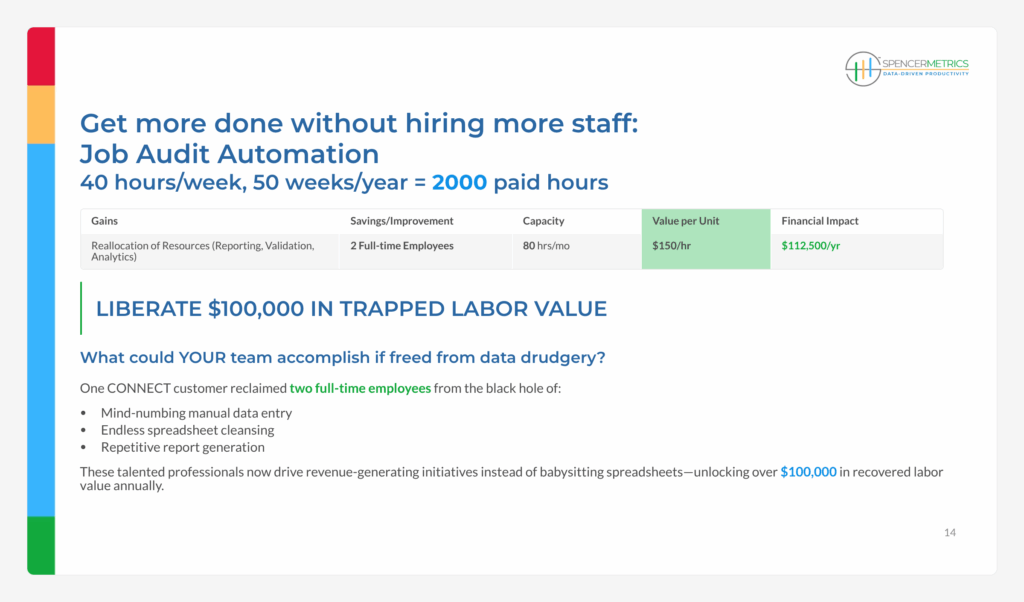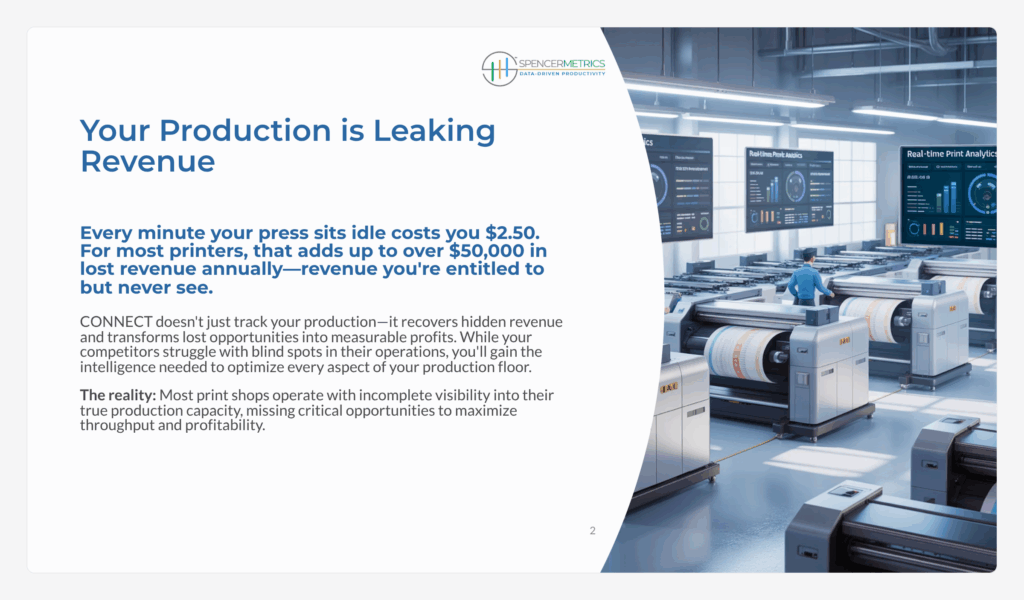Print shops are leaving hundreds of thousands of dollars on the table. Here’s how smart data collection is changing the game.
Every minute a printing press sits idle costs approximately $2.50. For most print operations, that seemingly small leak adds up to over $50,000 in lost revenue annually—money that’s rightfully theirs but never materializes on the balance sheet. As the printing industry faces increasing pressure on margins and fierce competition, a growing number of companies are turning to production intelligence platforms to plug these revenue leaks and transform their operations.
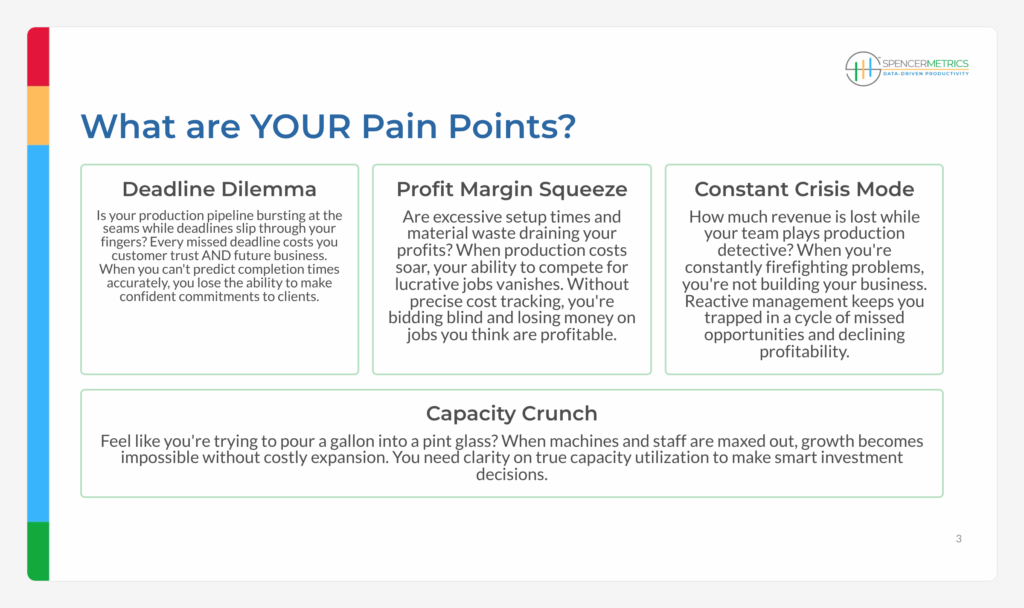
The Hidden Costs of Incomplete Visibility
Most print shops operate with a fundamental disadvantage: incomplete visibility into their true production capacity. This blind spot manifests in several critical pain points that chip away at profitability day after day.
The Deadline Dilemma is perhaps the most visible symptom. When production pipelines burst at the seams and deadlines slip through fingers, the cost goes beyond immediate revenue loss—it erodes customer trust and eliminates future business opportunities. Without the ability to predict completion times accurately, print operations lose the confidence to make firm commitments to clients.
Then there’s the Profit Margin Squeeze. Excessive setup times and material waste silently drain profits, while imprecise cost tracking leads to bidding blind and losing money on jobs that appear profitable on paper. When production costs soar without accurate measurement, the ability to compete for lucrative jobs vanishes.
Perhaps most exhausting is the Constant Crisis Mode. Production teams spend countless hours playing detective, hunting down problems instead of preventing them. This reactive management style traps operations in a cycle of missed opportunities and declining profitability, with valuable revenue lost while teams scramble to understand what went wrong.
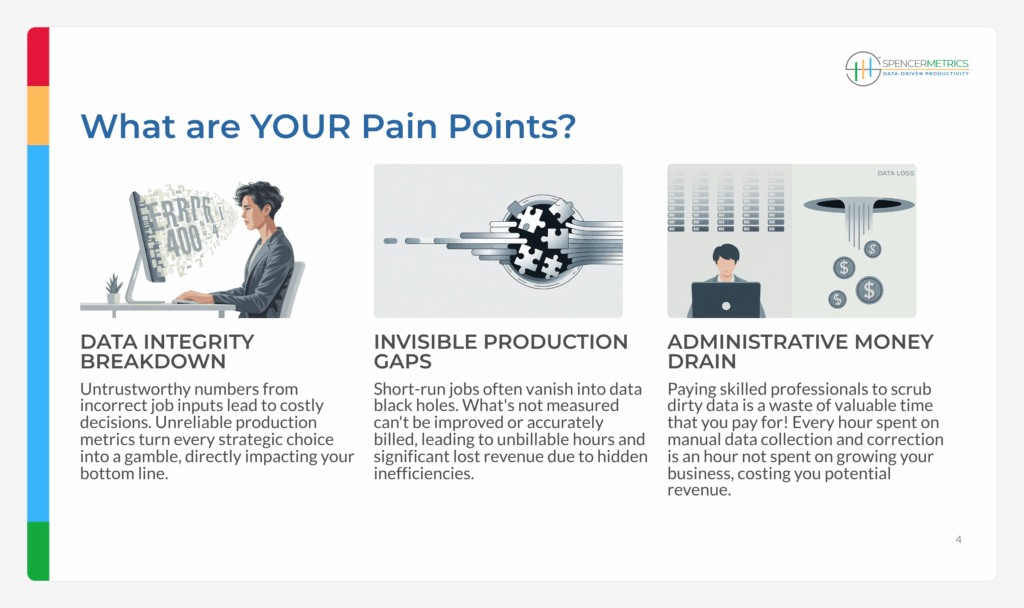
The Data Integrity Challenge
Beyond operational inefficiencies, many print shops struggle with a more insidious problem: untrustworthy data. Incorrect job inputs lead to unreliable production metrics, turning every strategic decision into a gamble that directly impacts the bottom line.
Short-run jobs often vanish into data black holes, creating invisible production gaps. What’s not measured can’t be improved or accurately billed, leading to unbillable hours and significant revenue loss due to hidden inefficiencies.
The administrative burden compounds these issues. Paying skilled professionals to manually collect and correct data represents a tremendous waste—every hour spent scrubbing spreadsheets is an hour not spent growing the business, costing potential revenue that could be invested in strategic initiatives.
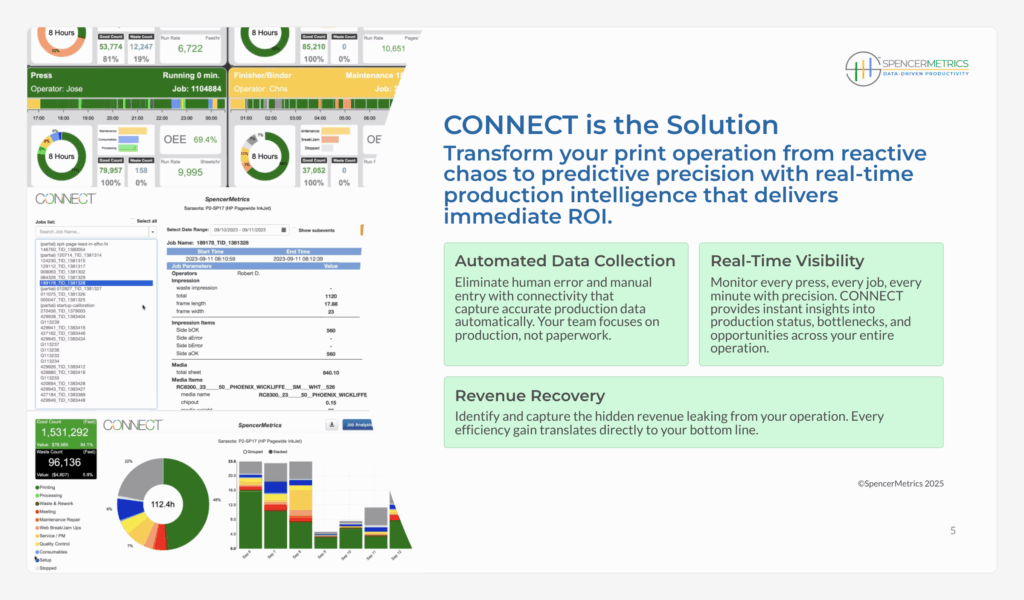
The CONNECT Solution: From Reactive to Predictive
Our production intelligence platform, CONNECT, is addressing these challenges head-on by transforming print operations from reactive chaos to predictive precision through real-time data collection and analysis.
The foundation is Automated Data Collection. By eliminating human error and manual entry through direct machine connectivity, these systems capture accurate production data automatically. This liberates teams to focus on production rather than paperwork, while exposing hidden bottlenecks that manual tracking inevitably misses.
Real-Time Visibility provides instant insights into production status, bottlenecks, and opportunities across entire operations. Managers can monitor every press, every job, every minute with precision, enabling proactive decision-making that prevents small issues from becoming costly production delays.
The result is tangible Revenue Recovery. Every efficiency gain translates directly to the bottom line, with automated setup optimization, crew efficiency tracking, and intelligent job sequencing unlocking hidden capacity in existing equipment.
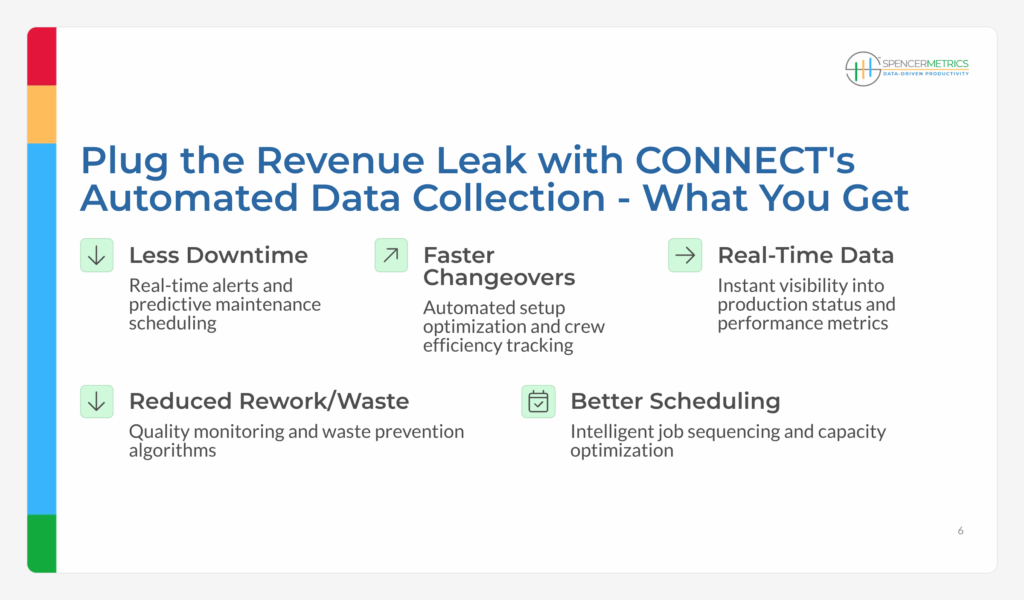
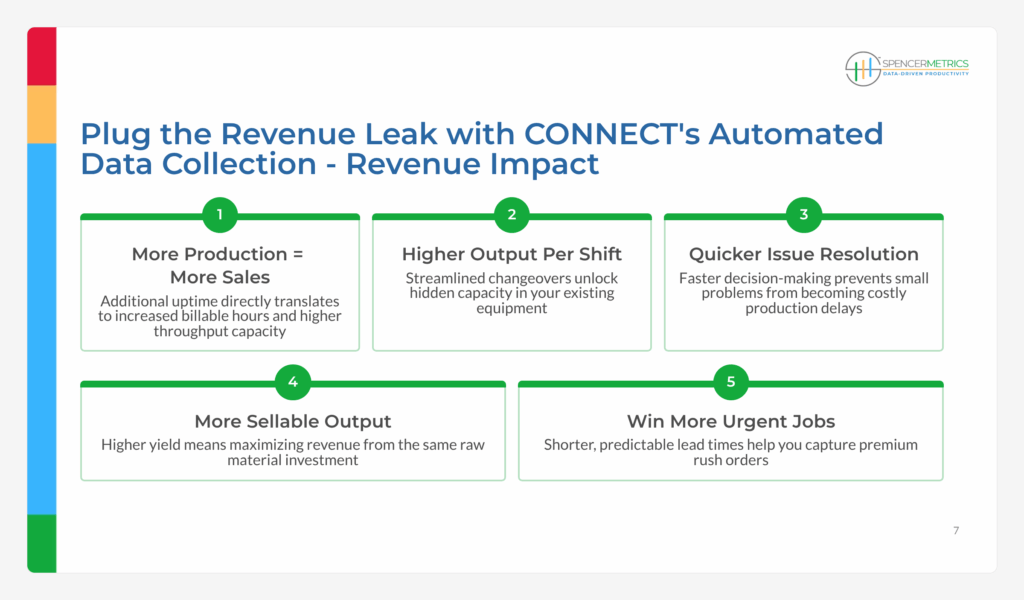
The ROI Reality
The financial impact of production intelligence can be transformational. Consider the math on a typical two-shift operation running five hours of print time per shift, five days a week, for 50 weeks per year (2,500 annual print hours):
Even a modest 1% improvement in efficiency generates an additional $12,250 annually per machine. Scale that across a production floor with multiple machines, and the revenue impact becomes substantial.
Real-world results bear this out. Customers implementing production intelligence platforms report average productivity improvements of 18%, worth approximately $220,320 annually, plus 2% waste reduction, saving another $24,480 per year. Combined, that’s $240,000 in hidden annual revenue—all without purchasing a single new machine.
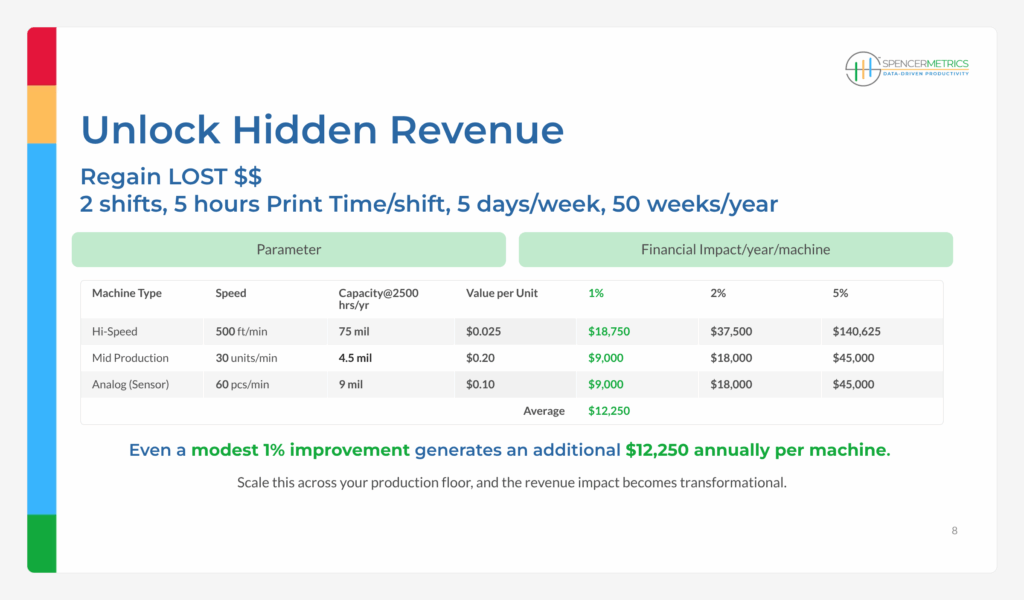
Beyond Direct Production Gains
The benefits extend beyond immediate production efficiency. Eliminating manual data collection at just 10 minutes per shift across two shifts generates significant savings. At a billing rate of $150 per hour, that translates to $1,050 per month per machine—money previously spent on tedious administrative tasks.
Perhaps even more valuable is the reallocation of human resources. One company reclaimed two full-time employees from the black hole of mind-numbing manual data entry, endless spreadsheet cleansing, and repetitive report generation. Those talented professionals now drive revenue-generating initiatives instead of babysitting spreadsheets, unlocking over $100,000 in recovered labor value annually.
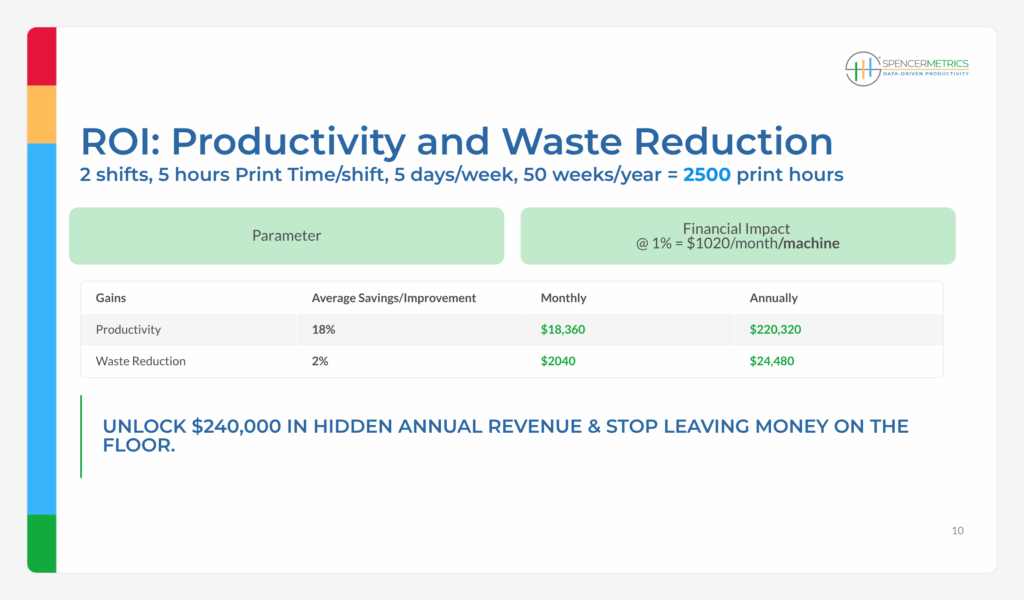
The Competitive Advantage
In an industry where margins are tight and competition is fierce, the difference between struggling to meet deadlines and dominating the market often comes down to better intelligence. With automated data exposing hidden production bottlenecks, optimized changeovers recapturing lost production hours, and precision quality monitoring transforming scrap into sellable product, print operations can maximize capacity without major capital investments.
Companies implementing production intelligence report the ability to slash changeover times, eliminate costly waste, and process more billable jobs daily using existing equipment. The result: presses generating an additional $20,000 every month in pure revenue that was previously slipping through their fingers.
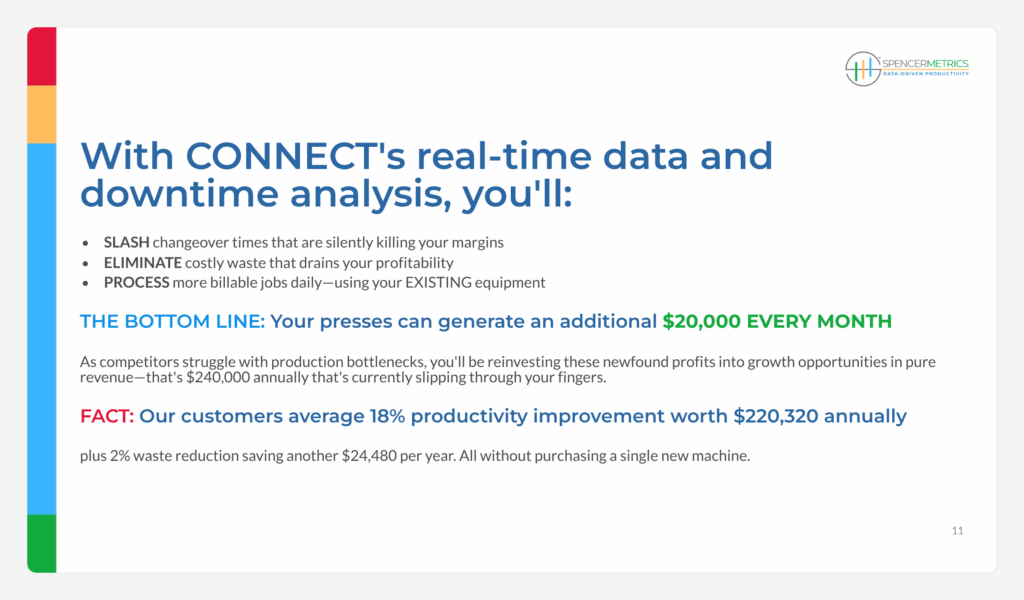
Looking Forward
As Jim Martin, President of Numo Manufacturing, notes in discussing their experience with production intelligence: “SpencerMetrics has for many years developed software to collect data from printing machines for customers to get the visibility they need to compete. The question for print operations isn’t whether production intelligence platforms provide value, as the ROI data makes that clear. The real question is: What strategic initiatives are your best people missing because they’re trapped in data management quicksand?”
For an industry where every minute counts and margins matter, production intelligence platforms don’t just collect data—they unlock hidden revenue already sitting on the production floor, waiting to be captured.
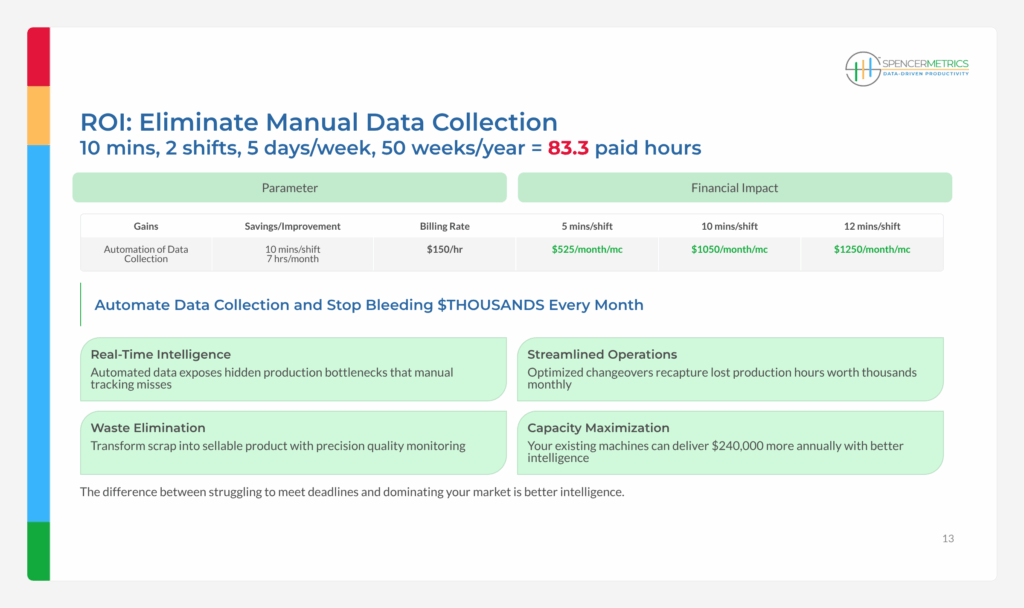
The print industry stands at a crossroads. Those who embrace data-driven production intelligence are discovering hundreds of thousands of dollars in hidden revenue. Those who don’t risk being left behind by competitors who are working smarter, not just harder.
